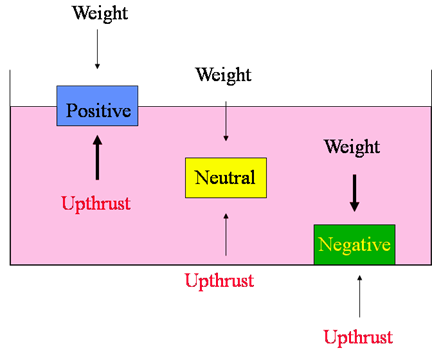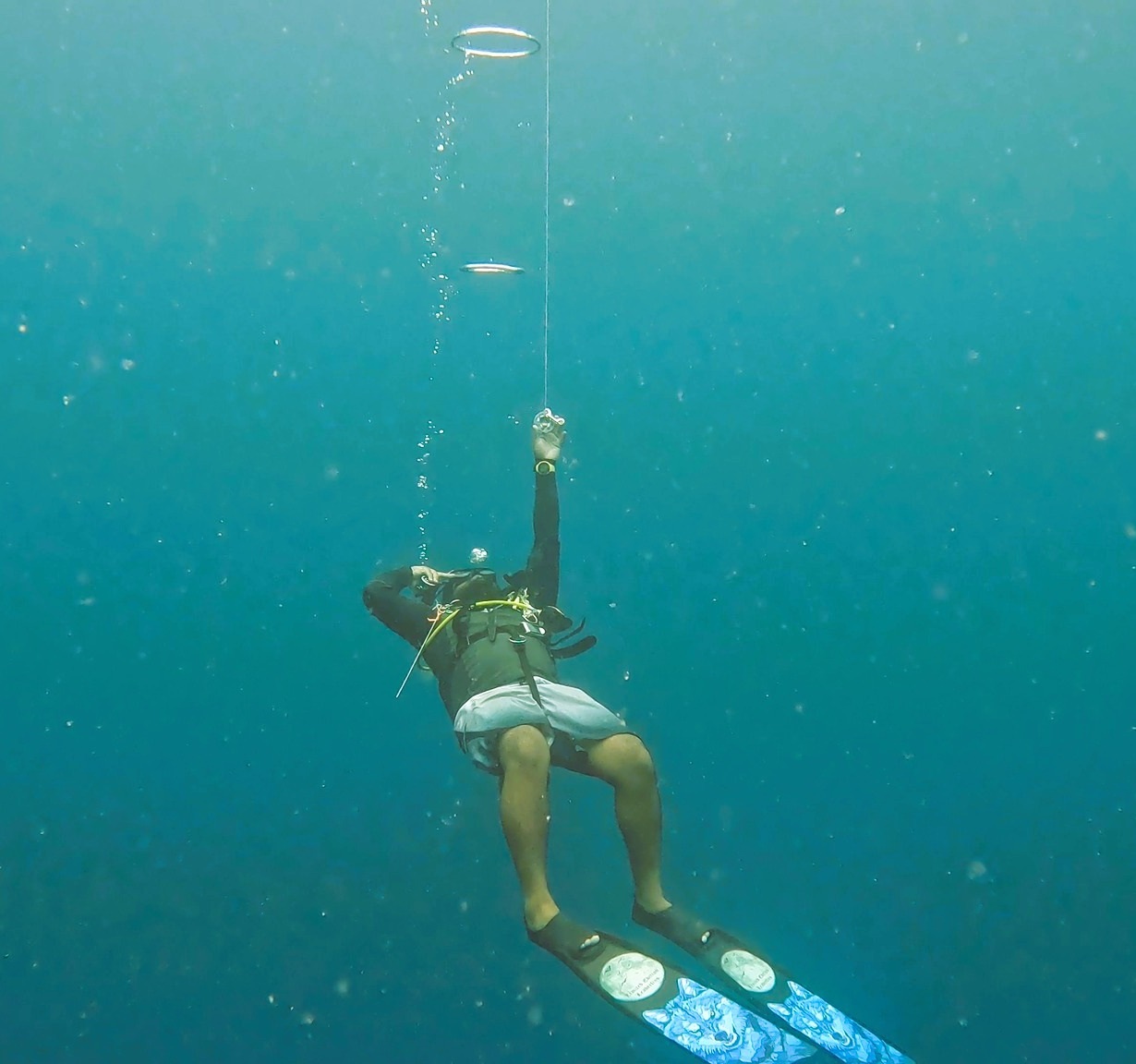Buoyancy & Diving
Understanding and optimising your buoyancy can make your diving safer and more enjoyable, with the added bonus of reducing your air consumption! Here we discuss the law of buoyancy and how to improve your control.
The Law of Buoyancy
The physical law of buoyancy was discovered by the ancient Greek mathematician and inventor Archimedes.
For a floating object (e.g. a diver on the surface), the weight of the displaced portion of the water will exceed the downward (gravitational) weight of the object, therefore the object floats (positive buoyancy). The larger the volume of air in your inflated BCD or suit the more the water is displaced, therefore producing a greater buoyant force.
To leave the surface the diver reduces volume (releases air), so that the buoyant (upward) force is less than the gravitational (downward) force and the diver descends (negative buoyancy). This is aided by the use of weights.
For a fully submerged object (e.g. a diver below the surface) the volume of fluid displaced is equal to the total volume of the object. Buoyancy is altered by making changes to the air volume.
As you descend in the water column air volume is reduced due to pressure (Boyle's Law). This means that the diver becomes more negatively buoyant with depth and the speed of descent will increase. Air must be added to the BCD/suit to counteract this.
When the upward force exerted by air volume is equal to the diver and equipment weight this is called neutral buoyancy. The diver can remain at the same depth with no effort. At a different depth a slightly different volume is needed to maintain neutral buoyancy taking account of the change in water density.

Salt water vs Fresh water?
Buoyancy (upward force) is dependent on the density of the liquid. The addition of salts to fresh water increases the density of the water and hence there is a greater upward force on objects in salt water than in fresh water. The diver will be more buoyant and require more weight to be able to sink from the surface.
Fresh water is less dense and therefore the upward buoyant pressure is relatively low. Divers need less weight to be able to sink from the surface.
Tips for Buoyancy Control
- Take time to do a weight check before you start your dive. Your weighting (and therefore buoyancy) will be affected many things including the suit you are wearing, the salt levels in the sea and the type of tank you are using. Being under/over-weighted during your dive can make it a lot harder to control your buoyancy.
- Add/ remove small amounts of air from your BCD/suit at a time to adjust your buoyancy and wait a few seconds to see the effects before further adjustments.
- Try and stay relaxed with long deep breathing and a horizontal position in the water.
- Do not hold your breath - this will increase the volume of air in your lungs and cause you become positively buoyant/ ascend unintentionally. It is also very dangerous and can cause damage to the lungs (barotrauma).
- The most important thing is practice and experience! The more you dive the more you will fine tune your buoyancy.
